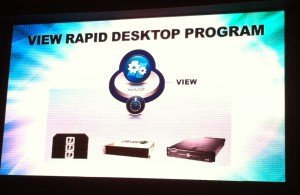This post is also available in: Italian
Reading Time: 4 minutes During the last VMworld EU, on Monday, there was a NDA Blogger Session from Nutanix and I was one of the attendees.
During the last VMworld EU, on Monday, there was a NDA Blogger Session from Nutanix and I was one of the attendees.
There were several people from Nutanix EMEA (Alan Campbell Regional director Sales, David Lawler Vice Presidend Marketing, Rob Tribe Regional System Engineering Manager, Jason Langore Senior corporate Account Manager, Jane Rimmer Marketing Consultant) as also other people from VMware (in the View and EUC area) and several other bloggers (include Giuseppe Guglielmetti, still from Italy).
I’ve already write a couple of posts about their solution and the innovative approach of building a scalable solution that mix both the storage and the computing part (see the introduction and the additional notes).
Their solutions is a one in all “block” that include both the computing power and the storage part, in a good example of Software Defined Storage approach (that is also scale-out and distributed). It could be technically sell as a simple “VSA” solution, but they prefer to sell as a complete solution to guarantee the quality and the performance.
Their solution is really a good example of scale-out storage solution, multi-tiered (on Fusion/IO, SSD and SATA), with a unified and fault tolerant filesystem, no limit on the number of nodes, perfect and linear scalability when node grows (other solution may not scale in a linear way due to the architecture, for example with master-slave roles).
Replication across the nodes is done at block level (1MB block size) and the interesting aspect is that the synchronous replication give the acknowledge then block as been replicated in the Fusion/IO card so that the latency is usually small (and mainly depends by the distance between nodes). Actually replication is implemented only with redoundacy 2 (like a network RAID 1), with no use of master node, no broadcast packets and without high limit in the number of nodes.
But in this version you cannot control where replicated data is put, and this could be a problem for a metro cluster (for example). Next releases will include a clear concept of failure domains.
As written in previous posts, actually if works only on VMware, but other hypervisors could be possible in the futures. Also it use standard virtual switch (to a better compatibility), but it could work without issue also with distributed virtual switches.
The Container is the Nutanix construct to expose a NFS datastore to VMware, that could be automatically presented and mounted:
Nutanix is also working in implement some VAAI functions also on the NFS datastore, for example for big reclaim or for linked clone features.
 And what about the presence of some VMware people? Of course because there is a strong partnership between the two companies.
And what about the presence of some VMware people? Of course because there is a strong partnership between the two companies.
But I’ve well understand it only on Wednesday during the second keynote: Nutanix is part the View Rapid Desktop Program, and was also mentioned during the keynote (see the first example on the left).
This demonstrate that their solutions could well fit in the VDI area… but what about common server consolidation or virtualizing business critical applications? In this case I think (but seems that is the same feeling of Nutanix people) that the single block need to be more flexible with their components, for example to privilege the available space, or minimize the costs.


